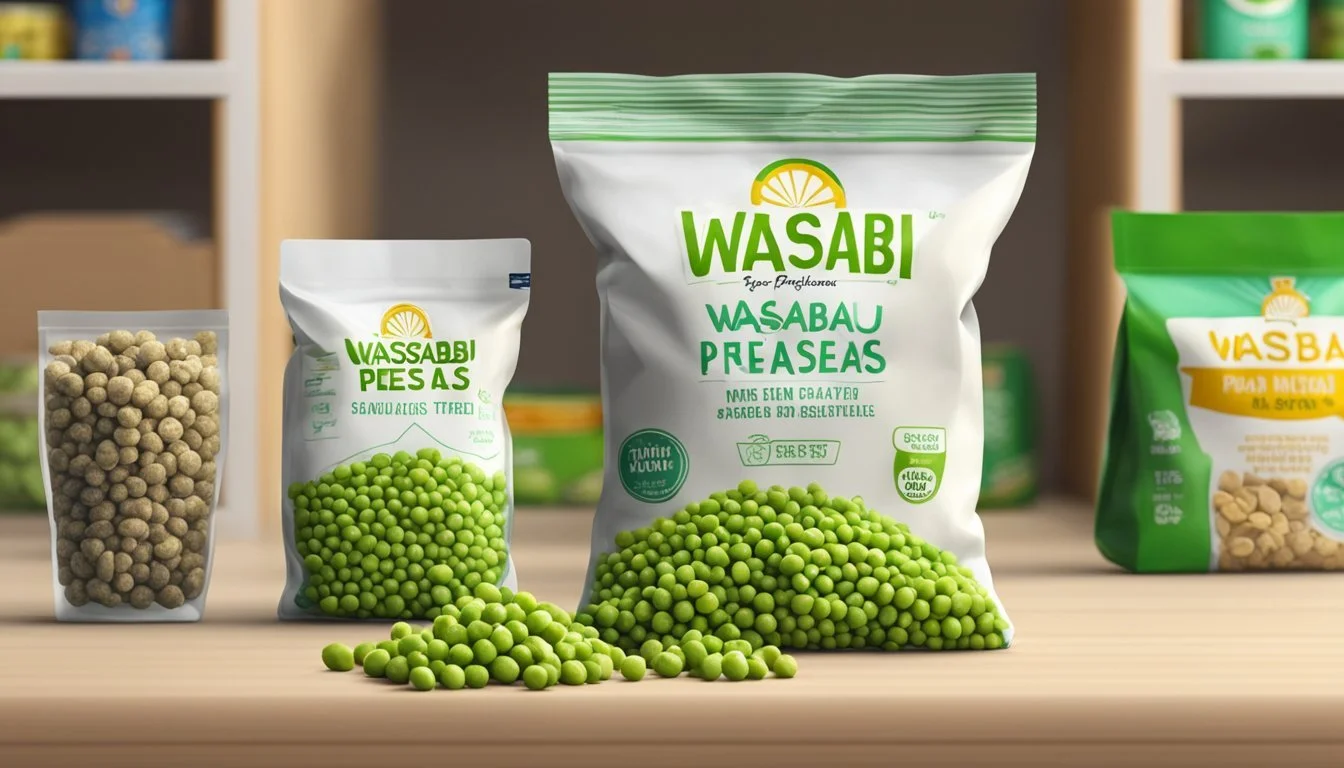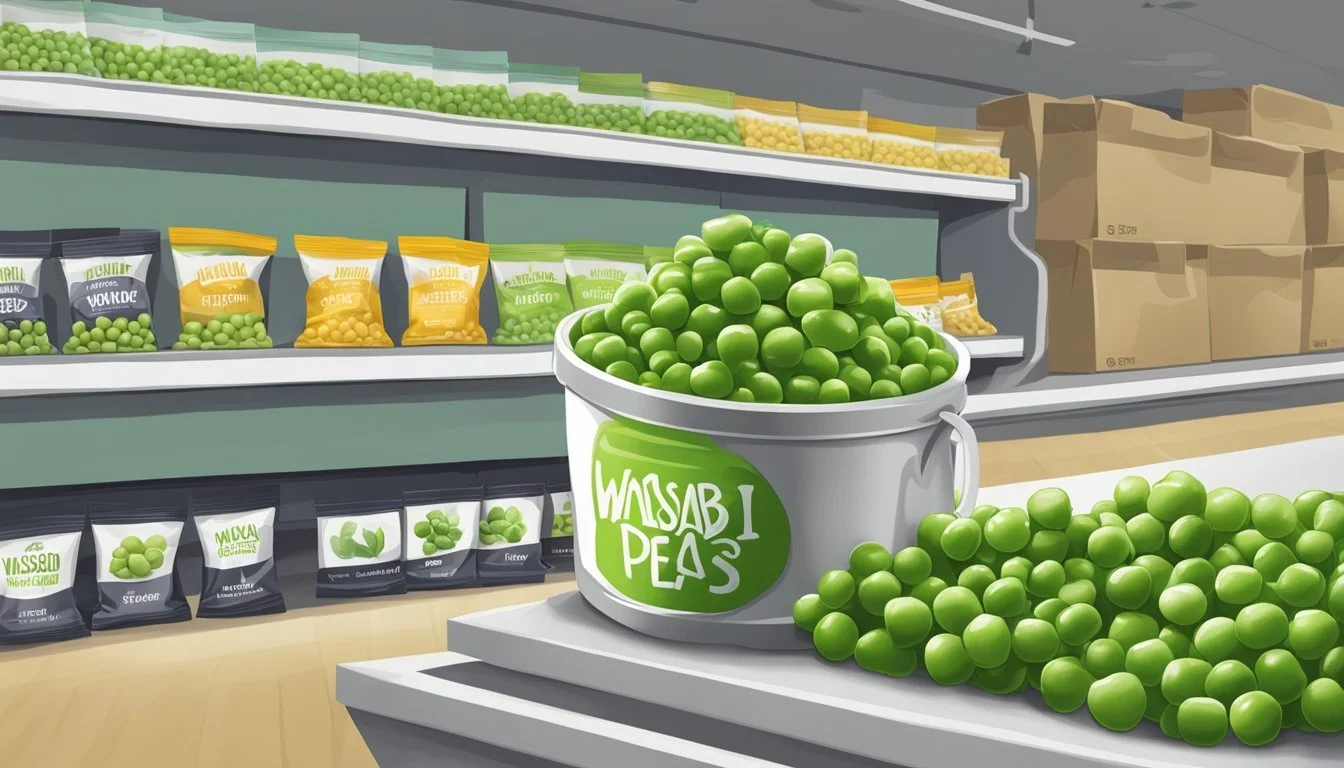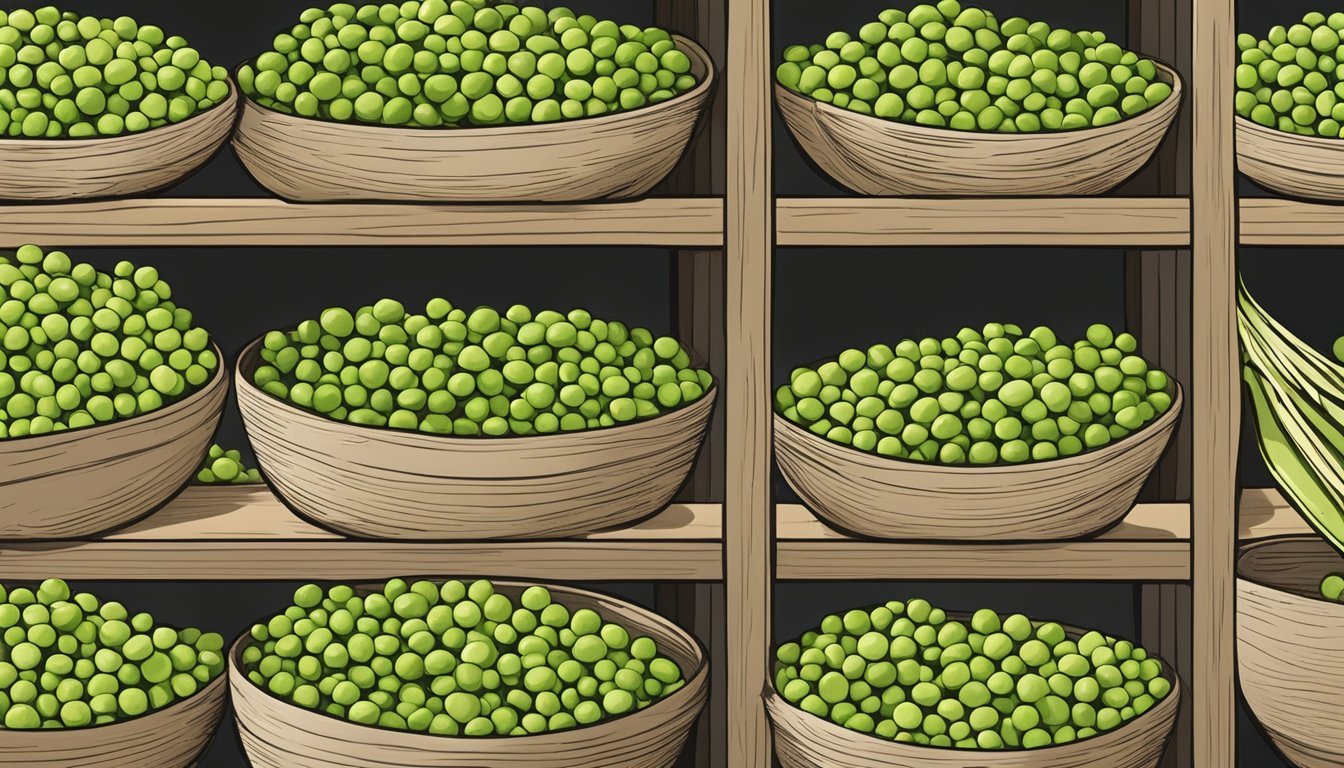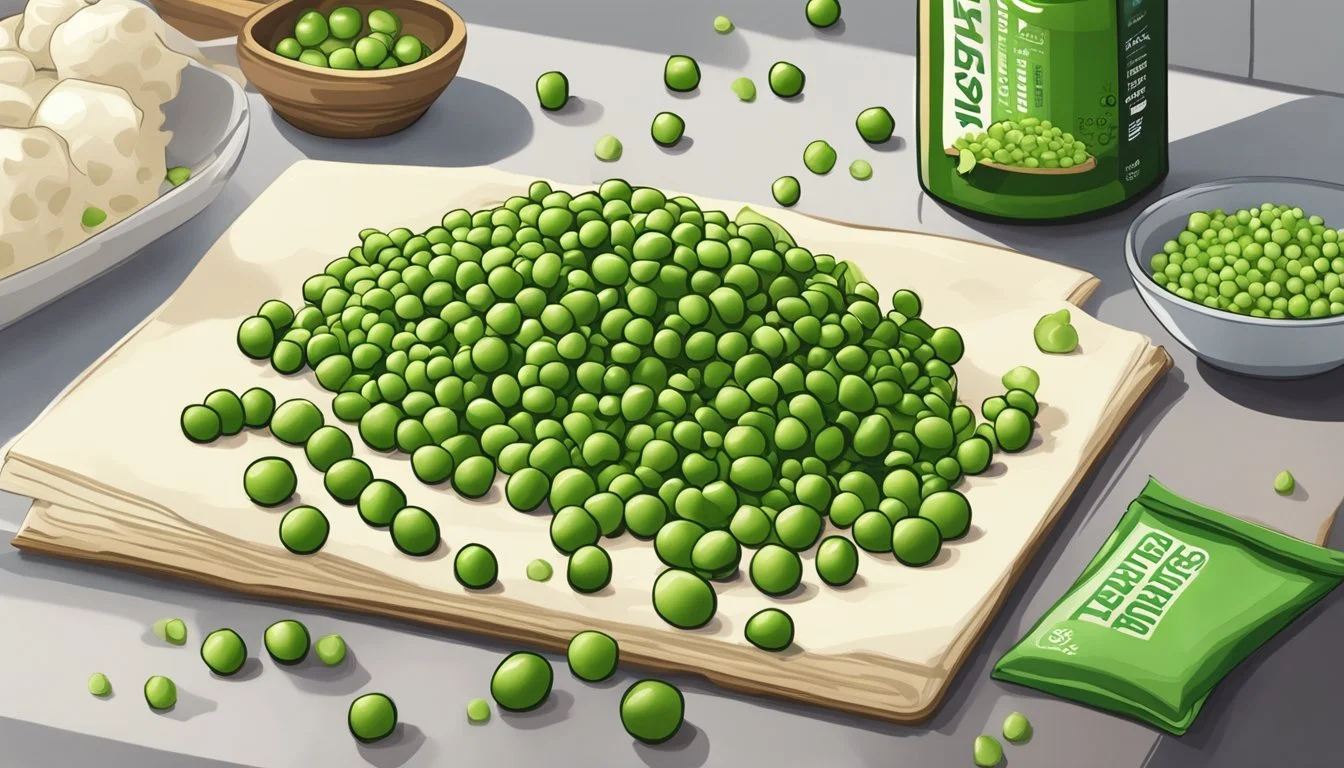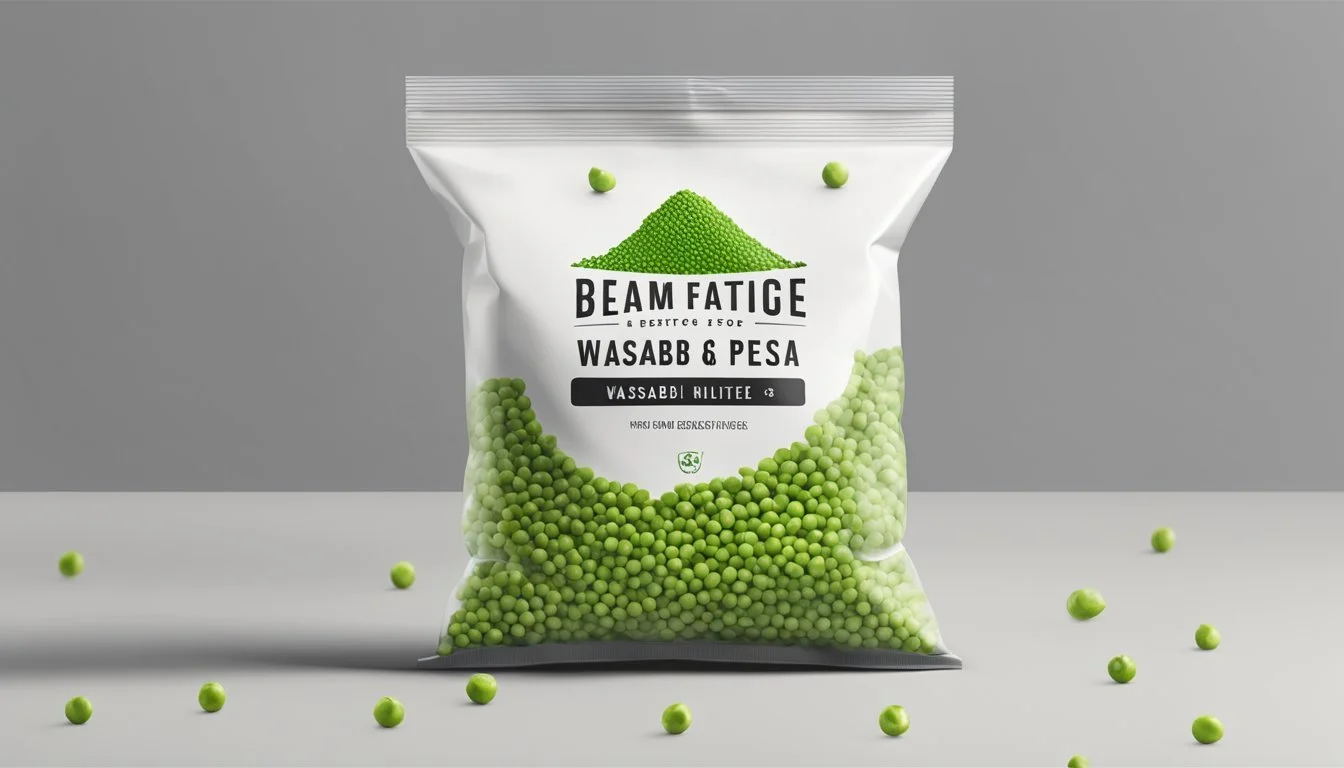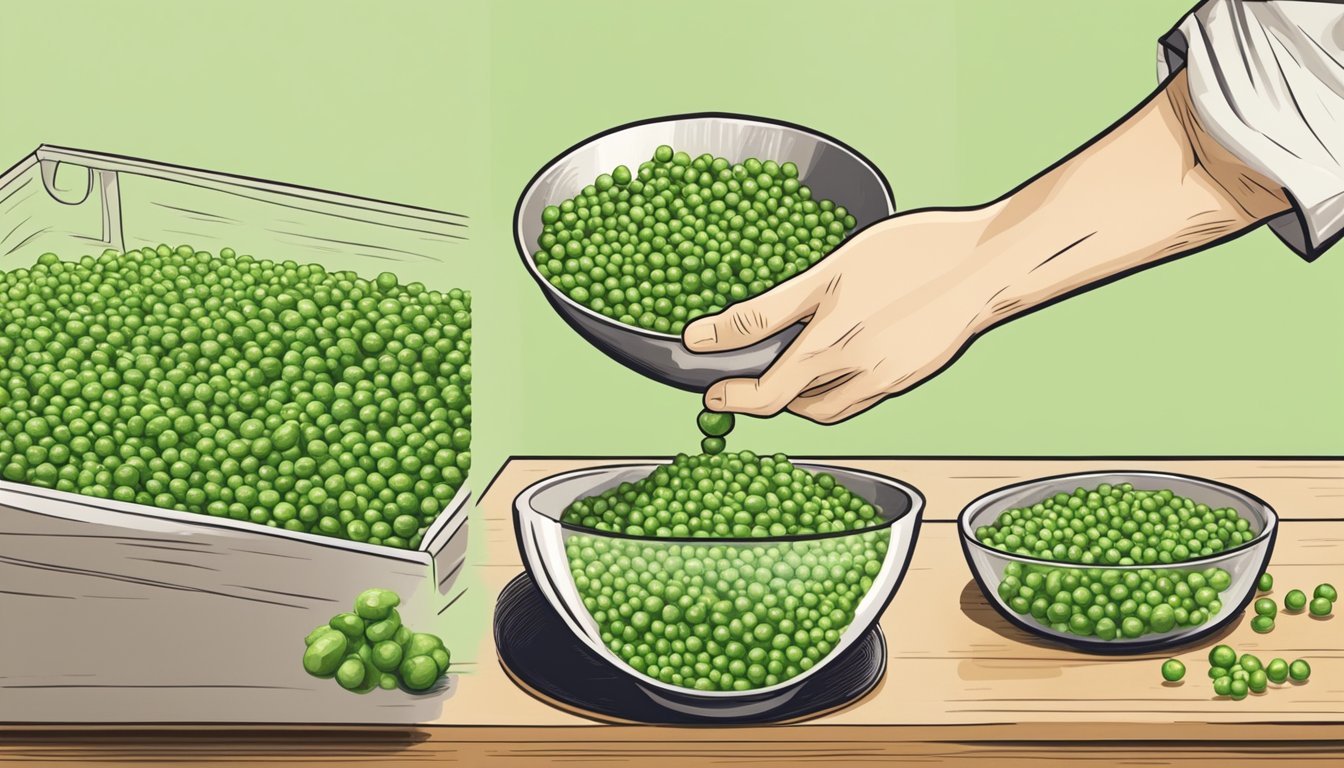How Long Do Wasabi Peas Last?
Shelf Life and Storage Tips
Wasabi peas are a flavorful snack known for their distinct heat and crunchiness. Typically enjoyed within the context of Japanese cuisine, these vibrant green morsels are made by coating dried peas with a mixture that includes wasabi powder. The coating provides a sharp, horseradish-like sting, often catching the unprepared snacker by surprise with its intensity. As a snack, wasabi peas are not only enjoyed for their taste but also appreciated for the convenience of having a long shelf life compared to fresh produce or cooked items.
The shelf life of wasabi peas, when stored correctly, can be quite extensive, making them a desirable pantry staple. Unlike fresh wasabi or wasabi paste, which can deteriorate more swiftly, the preservation process of drying and coating the peas extends their usability. To maximize their shelf life, it is essential to store wasabi peas in an airtight container in a cool, dry place, away from moisture and direct sunlight. However, it is essential to be aware of changes in texture or taste, which could indicate that the product is past its prime.
Overview of Wasabi Peas
Wasabi peas are a popular snack known for their piquant flavor and crunchy texture. They combine the health benefits of peas with the distinct taste of wasabi, offering a nutritious and flavorful experience.
Origin and Popularity
Wasabi peas originate from Japan, where they are often consumed as a standalone snack or as an accompaniment to meals. The snack's popularity has spread globally due to its unique blend of heat and crunch. These peas are made by roasting dried peas and then coating them with a mixture that includes wasabi powder, creating an invigorating, spicy treat that is favored by consumers seeking alternative snacking options.
Nutritional Value
Calories: Wasabi peas are relatively low in calories, making them a fitting choice for calorie-conscious individuals.
Macronutrients per 1 oz (28g):
Carbs: 17.5 grams
Protein: 4 grams
Fat: 4 grams
Fiber: 1 gram
Vitamins & Minerals:
Vitamin K: Essential for blood clotting and bone health.
Manganese: Important for bone formation and nutrient metabolism.
Thiamin: Supports nerve function and energy production.
Folate: Necessary for cell division and DNA synthesis.
Wasabi peas are revered not only for their taste but also for their nutritional content. They are an excellent source of protein and fiber, which can aid in digestion and provide a feeling of fullness. Additionally, they include a variety of vitamins and minerals essential for maintaining good health, making wasabi peas a healthy snack option.
Wasabi Peas Shelf Life
The shelf life of wasabi peas varies depending on whether the package has been opened. Knowing the time frames for both unopened and opened wasabi peas is essential for maintaining their quality and flavor.
Unopened Wasabi Peas
Unopened wasabi peas, stored in a cool, dry place away from sunlight, typically have a shelf life of up to 1 year. The key to prolonging their shelf life is ensuring they are kept in conditions that mitigate exposure to moisture and heat, which can lead to a decline in quality.
After Opening
Once a package of wasabi peas is opened, it's important to store them properly to maintain freshness. They should be kept in an airtight container to prevent moisture and other contaminants from affecting their quality. Opened wasabi peas usually retain their optimal quality for about 6 months when stored correctly, though they remain safe to consume beyond that time if they do not show signs of spoilage.
Factors Affecting Shelf Life
The shelf life of wasabi peas is influenced by several factors, including how they are stored, environmental conditions, and the way they are packaged. These elements determine the freshness and crispness of the product over time.
Storage Conditions
Wasabi peas require proper storage to maintain their quality. Placing them in an airtight container is crucial to prevent the influx of air and moisture, which can degrade the peas' texture and flavor. Storing them in a pantry or a dark place away from direct light typically extends their shelf life, keeping them dry and preserving their spiciness.
Environmental Factors
The quality of wasabi peas is significantly affected by environmental factors such as temperature and humidity. It's essential to store them in an environment that mimics their optimal conditions, which includes keeping them in a cool place, ideally with temperatures ranging between 5-10 degrees Celsius (41-50 degrees Fahrenheit). High humidity levels around 90% could benefit the product by preventing it from drying out, although this is more crucial for fresh wasabi rather than dried peas.
Packaging Method
Initial packaging method plays a pivotal role in the shelf life of wasabi peas. Retail packages are often equipped with protective layers to shield the peas from moisture and light, but once opened, transferring them to ziplock bags or containers sealed with cling film can help retain their freshness. Using labels and markers to date packages upon opening can assist in monitoring their age and ensuring they're consumed within the appropriate time frame.
Storage Guidelines
When storing wasabi peas, one must consider methods to maintain their freshness and flavor. Two central aspects to focus on are proper storage techniques and strategies to extend their shelf life.
Proper Storage Techniques
Wasabi peas should be stored in a cool, dry place such as a pantry to preserve their quality. Once opened, transferring them to an airtight container is recommended to prevent moisture and other contaminants from affecting their crispness. Here are specific tips for storing wasabi peas:
Cool Pantry: Before opening, keep in an environment with stable temperatures, away from direct sunlight.
Airtight Container: Seal them in containers that minimize air exposure.
Refrigeration: While not necessary, one may opt to refrigerate wasabi peas to potentially extend their quality.
Extending Shelf Life
The shelf life of wasabi peas, a crunchy snack favored for its spicy kick, can be maximized with the right storage practices. While they do not generally require refrigeration, keeping them in cooler conditions might help maintain their spiciness for a longer period. Avoiding extreme temperature changes is crucial as it may lead to condensation and make the peas soggy. Avoid freezing wasabi peas; freezing is not recommended as it can alter their texture and flavor profile.
Identifying Spoilage
When examining wasabi peas for spoilage, one must look for clear indicators that the product is no longer fit for consumption.
Signs of Deterioration
Visual Changes: There may be visible signs such as discoloration or the presence of mold. Wasabi peas should have a consistent green hue, and any other color may indicate spoilage.
Texture: Fresh wasabi peas are typically dry and crisp. If they feel moist or have become soft, they may have gone bad.
Odor: Spoiled wasabi peas may emit an unpleasant smell that differs from their original spicy aroma.
Taste: Although tasting is not recommended if spoilage is suspected, a change to a bitter or stale flavor is another indicator of deterioration.
Food Safety Considerations
Expiration Date: Always check the expiration date on the packaging. Consuming wasabi peas past this date can increase the risk of food poisoning.
Storage: If wasabi peas were improperly stored or exposed to moisture, it raises the likelihood of spoilage.
Illness: Consuming spoiled wasabi peas can lead to adverse health effects. At the first sign of spoilage, they should be discarded to prevent the risk of foodborne illness.
Usage and Recipes
Wasabi peas offer a punch of flavor and can be more than just a standalone snack. They lend themselves to various culinary applications, from enhancing the crunch in salads to acting as a unique crust for proteins.
Incorporating Wasabi Peas Into Dishes
Wasabi peas can elevate a dish's texture and infuse it with a spicy kick. They work particularly well when crushed and sprinkled over Japanese cuisines, such as sushi (What wine goes well with sushi?) or salads, adding a distinctive crunch. One can mix them into a snack mix for a dynamic flavor profile, or even incorporate them into peanut brittle for a sweet and spicy twist.
Salads: Toss crushed wasabi peas right before serving to maintain their crunch.
Sushi: Use them as a topping or inside rolls for an unexpected flavor burst.
Snack Mix: Combine them with nuts, pretzels, and other dried ingredients.
Suggested Wasabi Peas Recipes
In the realm of innovative recipes, Crunchy Wasabi Salmon with Lime stands out. The zesty lime balances the heat of the wasabi peas, which are used to create a crust that complements the fish's tenderness. For poultry lovers, Wasabi Pea-Crusted Chicken offers a crunchy outer layer that pairs delightfully with a variety of side dishes.
Crunchy Wasabi Salmon with Lime:
Ingredients: Salmon fillets, crushed wasabi peas, lime zest, and juice.
Method: Coat the fillets with the crushed peas and pan-sear until the crust is golden.
Wasabi Pea-Crusted Chicken:
Ingredients: Chicken breasts, crushed wasabi peas, flour, eggs.
Method: Dredge the chicken in flour, dip in eggs, coat with crushed peas, and bake or fry until fully cooked.
Related Wasabi Products
When exploring the world of wasabi, one encounters various related products beyond just wasabi peas. These items, known for their characteristic heat and flavor, are integral in various culinary applications.
Wasabi Paste and Powder
Wasabi paste and powder are convenient forms of wasabi that offer the distinctive heat and flavor associated with the fresh wasabi root.
Wasabi Paste: Typically sold in tubes, wasabi paste is a ready-to-use condiment made by mixing wasabi powder with water and sometimes additional flavors. The paste is often used in sushi and as a general spice in Japanese cuisine. The paste can vary in heat depending on the concentration of real wasabi or horseradish.
Wasabi Powder: This dehydrated form of wasabi can be reconstituted with water to create a paste. It's versatile and can be used to add heat to a range of dishes or to create custom condiments.
Fresh Wasabi and Roots
Fresh wasabi reflects the purest form of the Japanese horseradish.
Fresh Wasabi: The fresh stem, or rhizome, is known for its complex flavor profile and intense heat. Fresh wasabi is grated directly into dishes and provides a more nuanced taste compared to processed forms.
Wasabi Roots: Upon harvesting, the fresh wasabi root may be stored in a cool, humid environment to maintain its potency. The roots can generally last up to two weeks under proper storage conditions.
Wasabi-Flavored Condiments
A range of condiments incorporate wasabi flavor, broadening its culinary use.
Wasabi Mayonnaise: Combines the creaminess of mayonnaise with the heat of wasabi, creating a condiment that is rich in both fat and flavor. It can contain varying levels of sodium and iron depending on the ingredients used.
Wasabi Oil: Infuses the essence of wasabi into oil, making a versatile condiment that introduces wasabi's pungency to a dish without adding moisture.
Wasabi-Flavored Spices: These may include dry spice blends or seasoning salts that incorporate dehydrated wasabi, often mixed with other spices to create a balance of heat and flavor.
Health Benefits and Considerations
Wasabi peas, a crunchy and flavorsome snack, offer a range of nutritional benefits. They are known to be a source of vitamins and minerals, as well as fiber, which is crucial for digestive health. However, as with any food product, consideration must be given to potential health risks, particularly in relation to preservatives and sodium content.
Health Advantages of Wasabi Peas
Vitamins and Minerals: Wasabi peas deliver essential nutrients such as manganese, thiamin, and copper. They can contribute to one's daily nutritional requirements.
Fiber: With a notable fiber content, wasabi peas can aid in digestion and promote satiety, potentially assisting in weight management.
Potential Health Risks
Sodium Levels: Often high in sodium, excessive consumption of wasabi peas can lead to an increased risk of hypertension and other cardiovascular issues.
Preservatives: Depending on the brand, wasabi peas may contain preservatives that could contribute to undesired health effects if consumed in large quantities. It's important to check the ingredients list for any potential allergens or additives.
Buying and Handling Wasabi Peas
When purchasing and handling wasabi peas, it's essential to focus on quality and freshness to ensure the best flavor and shelf life. Proper transportation and handling can also significantly influence their taste and texture.
Selecting High-Quality Product
Quality wasabi peas start with the marrowfat peas themselves; they should be large, have a consistent green color, and lack any visible signs of imperfection. The peas should be evenly coated with wasabi flavoring, which appears as a vibrant green layer. High-quality wasabi peas possess a pungent aroma indicative of authentic wasabi.
Texture is another crucial aspect—the peas should be roasted to a satisfying crunch, without being too hard or stale. Verify freshness by checking the packaging date; this also ensures that the taste buds will be greeted with a spicy kick that's expected from a fresh snack.
Tips for Transporting and Handling
Transport: Wasabi peas should be kept in a cool, dry place during transport. Exposure to heat or moisture can degrade the quality and lead to a loss of that crisp texture and potent taste.
Handling: Upon purchasing, they should remain in their original cover to maintain aroma and prevent external contamination. If opened, transferring them to an airtight container can help preserve their freshness and pungent flavor.
Remember that wasabi peas are best enjoyed when their freshness is preserved, so it’s critical to handle them with care from purchase to consumption.
Miscellaneous Wasabi Topics
Wasabi peas hold a distinctive place in both culinary tradition and snacking innovation. They not only resonate with cultural heritage but also adapt to contemporary taste trends.
Cultural Significance and Pairings
Wasabi peas are a crunchy snack entrenched in Japan's gastronomic culture. These peas offer a spicy kick, which pairs exceptionally well with a variety of beverages. Traditional pairings include sake, a Japanese rice wine, due to its smooth flavor that complements the heat of wasabi. In more casual settings, wasabi peas are often enjoyed alongside beer, as the carbonation and maltiness can balance the snack's spiciness. For the non-alcoholic option, a refreshing soda can serve a similar purpose, cutting through the spice with sweetness and effervescence.
Novel Wasabi Pea Uses and Trends
Innovative uses for wasabi peas are emerging, reflecting changing consumer preferences and culinary creativity. Beyond their role as a standalone snack, they are becoming a popular bold topping, adding a crunchy texture and spicy flavor to various dishes. As a trendy garnish, they can cover everything from sushi rolls to salads, providing a zesty contrast. Among the latest trends, incorporating ground wasabi peas as a coating for proteins offers a twist on traditional breadcrumb coverings. This shift signifies an evolving addiction to bold flavors. However, it is important to store wasabi peas correctly to maintain their quality. Keeping them in a cool, dark place away from sunlight and ensuring the unopened package remains sealed until use can prolong their shelf life. Once the packaging is opened, transferring the peas to an airtight container, much like one would do with Kleenex to protect them from moisture, can help retain their crispness.
In experimenting with wasabi peas, moderation is key—too much can overpower the intended flavors, and their intense spiciness is not for everyone. Remember that they should complement the dish, much like how soy sauce is used to enhance, rather than dominate, a meal.
Post-Consumption Insights
After consuming wasabi peas, individuals often note the persistence of flavor and reflect on their overall experience. The following subsections detail the effects on digestion and aftertaste, as well as summarize customer reviews and feedback.
Digestion and Aftertaste Effects
Wasabi peas leave a distinctive aftertaste due to the wasabi coating which can linger on the taste buds for some time. Digestion of wasabi peas typically follows the same process as other high-fiber snacks (What wine goes well with snacks?), promoting a feeling of fullness. Some consumers may experience the aftereffects of wasabi's heat, which is usually mild and short-lived due to the peas' snack-sized nature. In terms of aftertaste, the intensity varies among brands and individual tolerance to spiciness; however, it's commonly described as sharp yet ephemeral.
Customer Reviews and Feedback
Customer reviews often highlight the addictive quality of wasabi peas, pointing out the balance between the spicy wasabi coating and the crunchy texture of the peas.
Taste buds: Customers frequently mention the immediate kick of flavor that excites the taste buds.
Addiction: Some feedback includes accounts of mild addiction to the snack, owing to its unique taste profile.
Feedback: Overall, feedback is generally positive with a few instances of people finding the spice level either too tame or overly intense.
Consumer feedback is invaluable for understanding the range of experiences with wasabi peas, from their bold taste to the subsequent desire for more.

